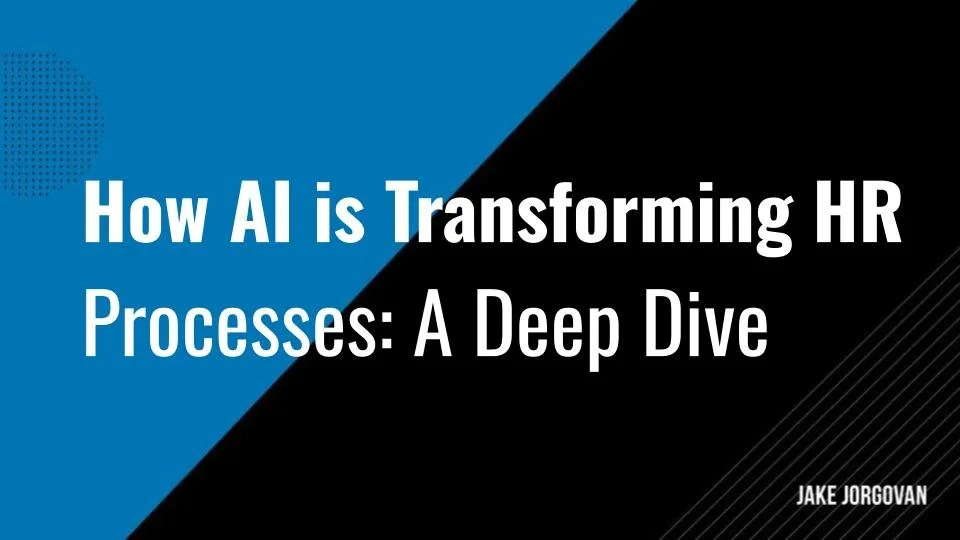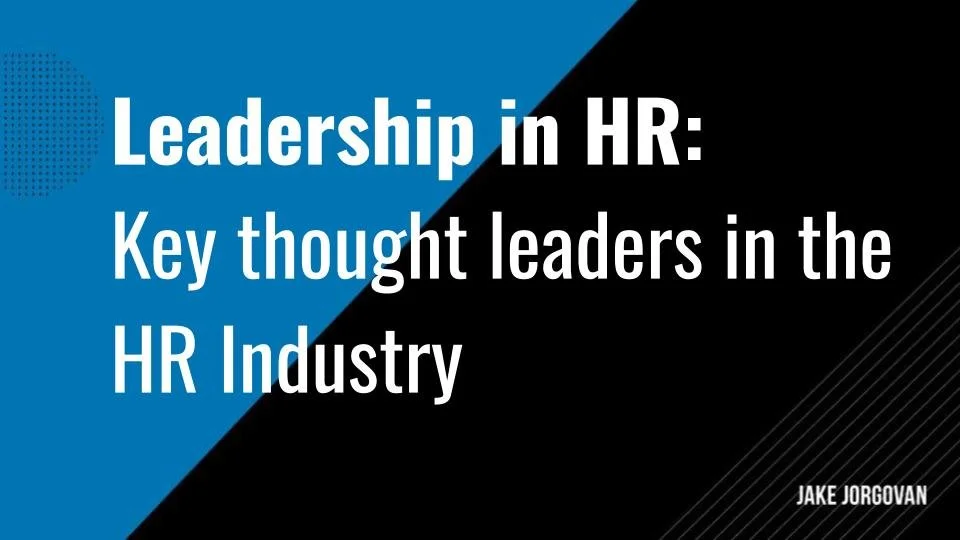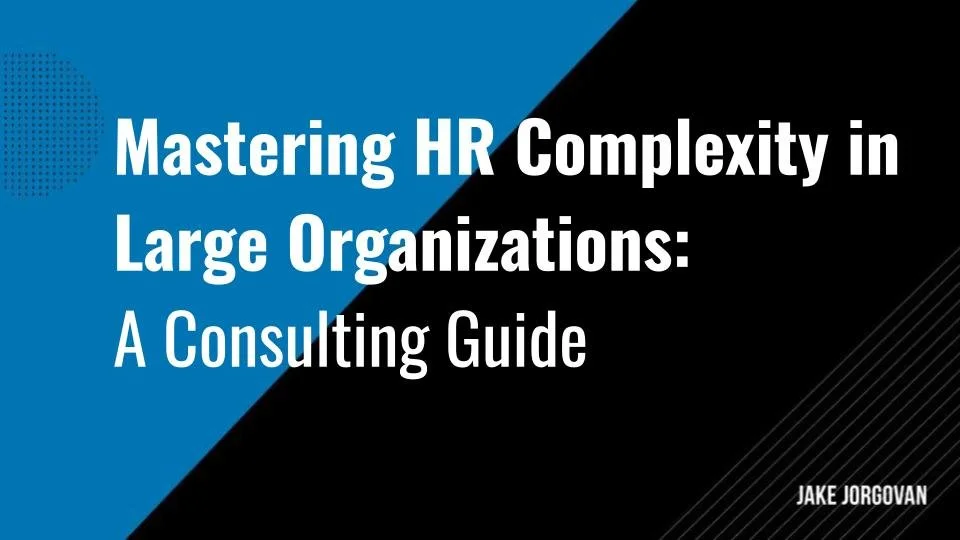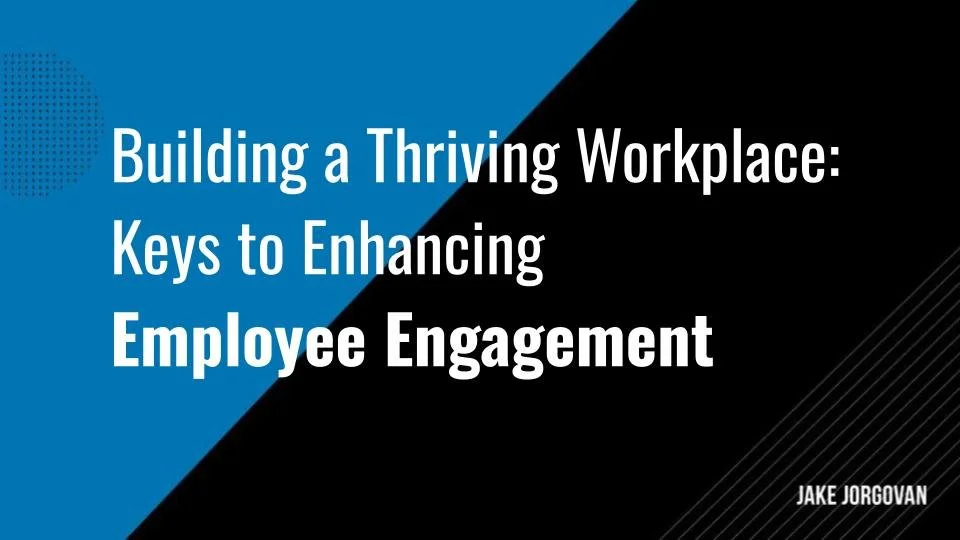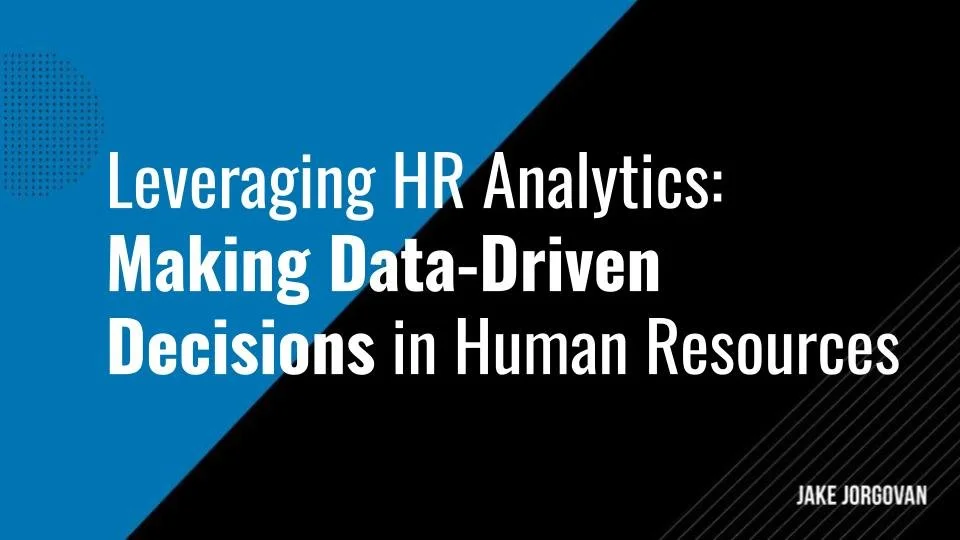Navigating the Maze of HR Compliance: Best Practices for Today's Businesses
Navigating the maze of HR compliance is an ongoing process. Every year, the complexity seems to multiply.
You're not alone in feeling overwhelmed by the ever-changing landscape of employment laws and regulations.
But you've come to the right place to demystify HR compliance and ensure your business stays ahead.
In this article, we'll explore:
Keep reading to unlock the best practices that will guide you through the complex world of HR compliance.
Common HR Compliance Challenges
Human Resources (HR) compliance encompasses a wide range of legal and regulatory requirements that organizations must adhere to to operate effectively and ethically.
Let's explore some of the key areas of impact for HR compliance:
Navigating Complex Employment Laws: One of the most significant challenges is keeping up with the ever-changing landscape of employment laws at local, state, and federal levels. This includes understanding and implementing regulations related to hiring, termination, discrimination, harassment, and employee classification. Failure to comply can result in legal disputes, fines, and damage to reputation.
Managing Diversity and Inclusion: Ensuring diversity and promoting inclusion within the workplace has become a legal imperative. Organizations face the challenge of implementing unbiased hiring practices, providing equal pay, and creating an environment where all employees feel valued and included. This requires continuous effort and monitoring to avoid discrimination and to foster a culture of respect and equality.
Ensuring Data Protection and Privacy: With organizations collecting an increasing amount of personal information, HR departments must ensure the confidentiality and security of employee data. Compliance with data protection regulations, such as the General Data Protection Regulation (GDPR) in Europe or local privacy laws, requires robust data management policies and practices to prevent unauthorized access and breaches.
Handling Compensation and Benefits: Proper compensation and benefits management is crucial for compliance. This includes adhering to minimum wage laws, managing overtime, and providing mandated benefits such as health insurance or paid leave. Misclassifying employees as independent contractors can also lead to significant legal and financial consequences.
Maintaining Workplace Safety and Health: Ensuring a safe and healthy work environment is essential for compliance with Occupational Safety and Health Administration (OSHA) standards and other relevant regulations. This includes regular risk assessments, providing appropriate training and equipment, and promptly addressing hazards or incidents.
These challenges require a strategic approach and constant vigilance to ensure compliance and mitigate risks. Failure to address these issues effectively can result in legal penalties, financial loss, and damage to the organization's reputation and employee morale.
5 Best Practices for Navigating HR Compliance
1) Establish Clear Policies and Procedures
Establishing clear policies and procedures in alignment with labor laws is fundamental for HR compliance. This approach ensures that all organizational actions are consistent with legal requirements, reducing non-compliance risk. For HR specialists, this means meticulously developing a comprehensive set of guidelines that address every aspect of employment within your organization, from recruitment to termination.
Here's how to leverage this strategy:
Conduct a Comprehensive Review: Review current labor laws applicable to your jurisdiction and industry. This includes federal, state, and local regulations. Identify any areas where your current policies may fall short or are outdated.
Develop or Update Policies: Based on your review, develop or revise your HR policies to ensure they fully comply with these laws. Focus on areas such as equal employment opportunity, workplace safety, wage and hour standards, and leave policies.
Ensure Clarity and Accessibility: Ensure that your policies are clearly written and easily understandable by all employees. They should also be readily accessible, ideally in both digital and physical formats, to ensure that everyone is aware of their rights and responsibilities.
Monitor and Update Regularly: Laws and regulations change. Implement a process for regularly reviewing and updating your policies to reflect these changes, ensuring ongoing compliance.
Insider Tip:
We've found that incorporating feedback mechanisms within your policy framework significantly enhances compliance. Encourage employees to report potential compliance issues or suggestions for policy improvements. This helps identify blind spots you might have missed and promotes a culture of transparency and trust. By actively engaging your workforce in the compliance process, you turn what could be seen as a top-down directive into a collective responsibility.
2) Conduct Regular HR Compliance Audits and Risk Assessments
Regular HR compliance audits and risk assessments are critical for an effective HR compliance strategy. These audits allow you to identify areas of non-compliance and potential risks before they escalate into serious issues, such as legal challenges or financial penalties.
Here's how you can conduct your audits:
Plan Your Audit Strategy: Start by defining the scope of your audit. This should cover all areas of HR compliance, including but not limited to recruitment practices, wage and hour laws, workplace safety, anti-discrimination policies, and benefits administration. Decide whether you'll conduct this audit internally or if you'll hire external consultants.
Gather and Review Documentation: Collect all relevant HR documents, policies, employee files, and past audit reports. Review these documents thoroughly to assess their compliance with current laws and regulations.
Interview Key Personnel: Conduct interviews with HR staff, managers, and employees. These conversations can uncover insights not evident in documentation alone and highlight areas where training or policy reinforcement is needed.
Identify Gaps and Risks: Analyze the data you've collected to identify any gaps in compliance or areas of risk. This might include outdated policies, lack of proper documentation, or practices not in alignment with current laws.
Develop and Implement Action Plans: Based on your findings, create a prioritized action plan to address identified compliance gaps and risks. This may involve updating policies, providing additional training, or making operational changes.
Monitor Progress and Re-assess: Compliance is an ongoing process. Implement mechanisms to monitor the effectiveness of your changes and conduct regular audits to ensure continuous compliance.
Insider Tip:
Establish a dedicated compliance task force within your organization. This cross-functional team should consist of members from HR, legal, finance, and any other relevant departments. A cross-functional task force brings together diverse perspectives and expertise, crucial for comprehensively understanding and addressing compliance issues. This diversity helps identify risks that might not be apparent to the HR department alone.
3) Invest in Continuing Training and Education
Investing in continuous training and education for HR professionals and management is a must. This commitment ensures that your team remains informed about the latest legal developments, understands the nuances of compliance requirements, and is equipped to implement necessary changes proactively.
Here’s how to level up your organization with continuous training:
Identify Training Needs: Assess the current level of compliance knowledge within your HR team and management. Identify gaps or areas where updates are necessary, considering recent legal changes or areas of frequent non-compliance.
Customize Training Programs: Develop or source training programs that address these specific needs. Ensure that the training is relevant to the roles and responsibilities of the participants. For instance, training for managers should focus on their part in enforcing compliance within their teams, such as avoiding discriminatory practices during hiring.
Incorporate Various Learning Methods: Recognize that people have different learning styles. Incorporate a mix of e-learning, workshops, seminars, and webinars to cater to these preferences. This variety can enhance engagement and retention of information.
Schedule Regular Updates: Compliance laws are constantly evolving. Schedule regular training sessions to keep your team updated. This could be in the form of annual refresher courses or more frequent updates when significant legal changes occur.
Measure Training Effectiveness: Implement methods to assess the effectiveness of your training programs. This could be through tests, surveys, or reviews of compliance performance indicators post-training. Use this feedback to refine future training.
Encourage Professional Development: Beyond mandatory compliance training, encourage your HR professionals and managers to pursue ongoing professional development in their field. This could include attending conferences, obtaining certifications, or participating in industry networks.
Insider Tip:
Creating an internal compliance knowledge base is an invaluable resource. This could be a digital library of compliance resources, legal updates, training materials, and best practices. We’ve encouraged HR teams to contribute to and regularly update this knowledge base. It becomes a living document that not only aids in training but also serves as a quick reference for compliance questions.
4) Utilize Technology and HR Management Systems
Utilizing technology and HR management systems for efficient compliance tracking is a game-changer for businesses navigating HR compliance. These technologies streamline the monitoring, reporting, and management of compliance-related activities, ensuring you stay ahead of potential compliance issues.
Here's how to put this strategy into action:
Select the Right Technology: Evaluate different HR management systems and compliance tracking tools to find the ones that best meet your organization's needs. Consider factors such as scalability, ease of use, integration capabilities with your existing systems, and the specific compliance features offered.
Centralize Compliance Data: Use your chosen technology to centralize all compliance-related data. This includes employee records, training logs, audit reports, and compliance-related documentation. A centralized system enhances visibility and accessibility and ensures you have a comprehensive view of your compliance status at all times.
Automate Compliance Processes: Leverage your HR management system's automation capabilities to streamline routine compliance tasks. This could include automatic updates to employee records, scheduling of compliance training, and reminders for upcoming legal changes or deadlines. Automation not only saves time but also reduces the risk of human error.
Monitor Compliance in Real-Time: Many HR management systems offer dashboards and reporting tools that allow you to monitor compliance metrics in real-time. Use these tools to track progress, identify trends, and spot potential areas of concern before they escalate.
Regularly Update and Maintain Your System: Ensure that your HR management system is regularly updated to reflect the latest legal requirements and compliance best practices. Work with your system provider to keep abreast of any updates or enhancements that could benefit your compliance strategy.
Insider Tip:
Integrating an employee self-service portal within your HR management system can be a particularly effective strategy. This portal allows employees to access their personal records, submit documents, and complete compliance-related tasks (e.g., compliance training) online. We've found that empowering employees in this way reduces the administrative burden on the HR department. Besides, you also increase compliance awareness and engagement across the organization.
5) Engage with Legal Experts or Consultants
Engaging with legal experts or consultants to stay updated on regulatory changes is vital for staying up to date on HR compliance. Legal experts specialize in understanding the complexities of employment law and can provide tailored advice to ensure your organization remains compliant amidst constantly evolving regulations.
Here’s how to leverage legal expertise:
Identify Your Legal Advisory Needs: Assess areas within HR compliance where legal expertise could be most beneficial. This could range from employment law and workplace safety regulations to data protection laws relevant to your industry and jurisdiction.
Choose the Right Experts: Look for legal experts or consulting firms with a strong track record in your industry or with the specific legal issues you face. Consider their experience, reputation, and the breadth of their services. It's important to have experts who understand the law and anticipate how changes might impact your business.
Establish a Proactive Relationship: Instead of reaching out to legal experts only in times of crisis, establish an ongoing relationship. Regular consultations can help you stay ahead of regulatory changes, understand potential impacts on your operations, and strategize on compliance proactively.
Customize Compliance Strategies: Use the insights and advice from your legal experts to tailor your compliance strategies to your specific business needs and risks. This bespoke approach ensures your compliance efforts help you manage risk and align with your business objectives.
Educate Your Team: Arrange for these experts to provide training sessions or workshops for your HR team and management. This helps disseminate expert knowledge throughout your organization, ensuring that key personnel are equipped to handle compliance issues and make informed decisions.
Insider Tip:
Creating a regulatory update newsletter curated by your legal experts is a highly effective way to keep your team informed. We regularly collaborate with our legal partners to distill complex regulatory information into digestible, actionable updates tailored to our specific business context. This keeps our team abreast of the latest changes and demonstrates how these changes might impact different areas of our operations.
Future Trends in HR Compliance
The future of HR compliance is shaped by rapid technological advancements, evolving workforce dynamics, and an increasingly complex regulatory environment. Here are some key trends anticipated to influence HR compliance:
Digitalization of Compliance Processes: Automation and digitalization will streamline compliance processes, reducing human error and administrative burdens. AI-powered tools will automate data analysis, policy updates, and compliance monitoring, ensuring organizations stay ahead of regulatory changes.
Data Privacy and Protection: With the rise of remote work and digital HR platforms, data privacy will become a paramount concern. Organizations will need to adopt stringent data protection measures, comply with global data privacy regulations like GDPR, and ensure employee data is handled securely.
Gig Economy and Contract Work: The growth of the gig economy and contract work presents new compliance challenges, including worker classification, benefits entitlement, and tax implications. HR departments must adapt to manage a more fluid workforce while maintaining compliance with labor laws.
Focus on DEI (Diversity, Equity, and Inclusion): Regulatory bodies are placing increased emphasis on DEI, making it not just an ethical imperative but a compliance requirement. Companies will need to implement transparent DEI policies, conduct regular audits, and report on progress to meet regulatory standards.
Remote Work Regulations: The shift towards remote work necessitates new compliance frameworks addressing work hours, health and safety, and cross-border employment laws. Organizations will have to navigate varying international laws to remain compliant.
Navigate HR Compliance with Confidence
In this article, we covered the essentials of HR compliance and outlined the best practices for businesses in today's complex regulatory environment. We focused on practical strategies to ensure your business stays on top of legal requirements and fosters a positive workplace culture.
To navigate the maze of HR compliance, stay informed about the latest regulations and implement a systematic approach to compliance management. That’s how you can mitigate risks, avoid penalties, and ensure your business operates smoothly and ethically.
Remember, keeping up with HR compliance is an ongoing process that requires your attention and effort. Use the insights and strategies discussed here as a guide to steer your business in the right direction. With a proactive and informed approach, you can confidently manage HR compliance and contribute to your business's success.




















